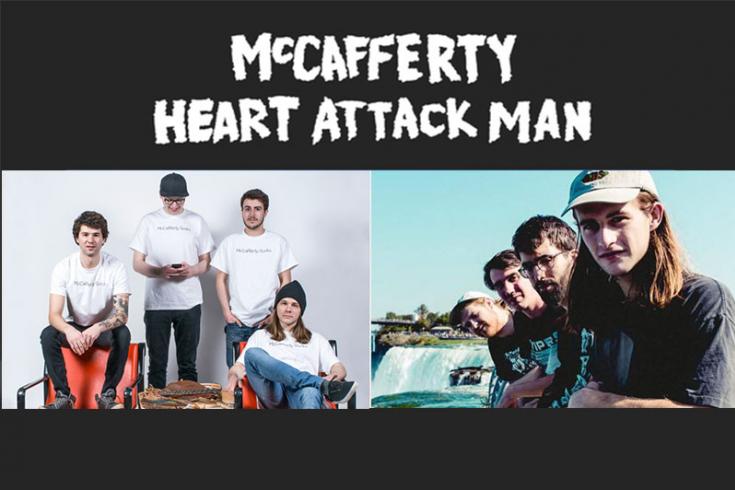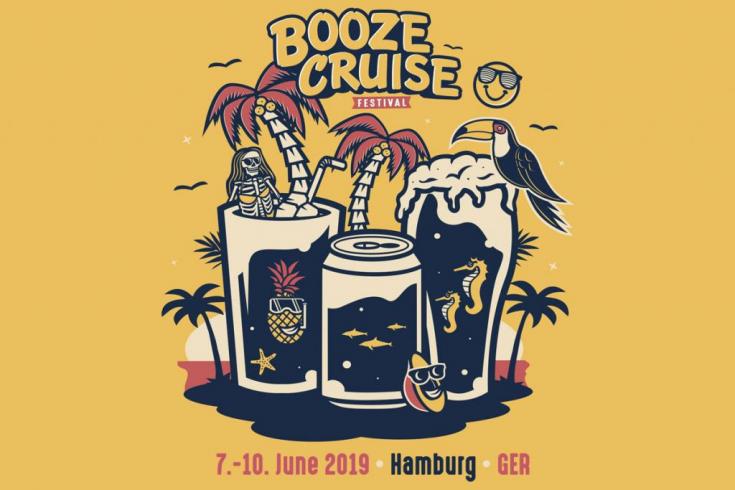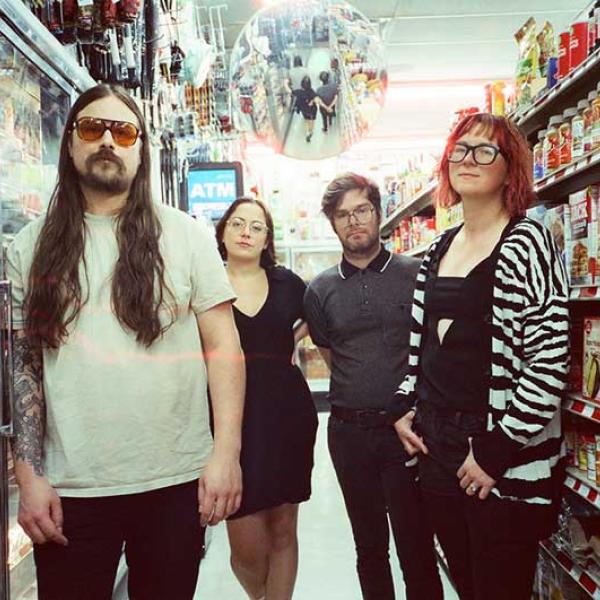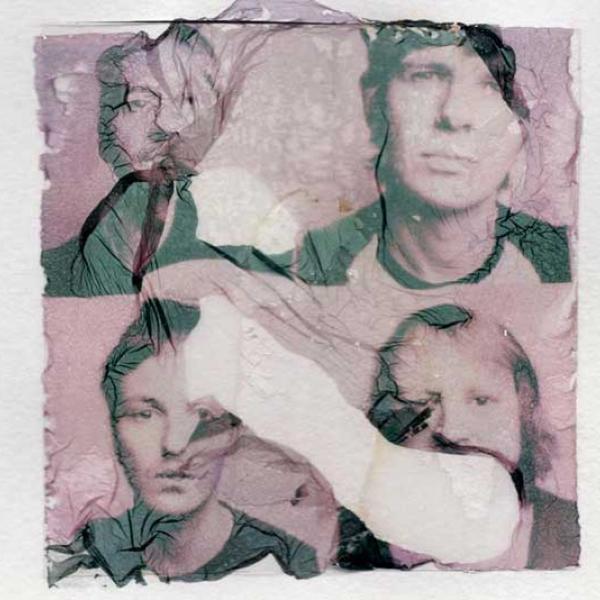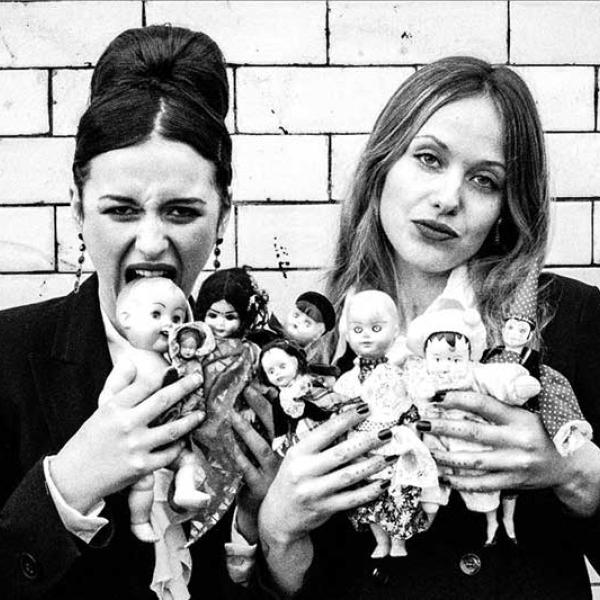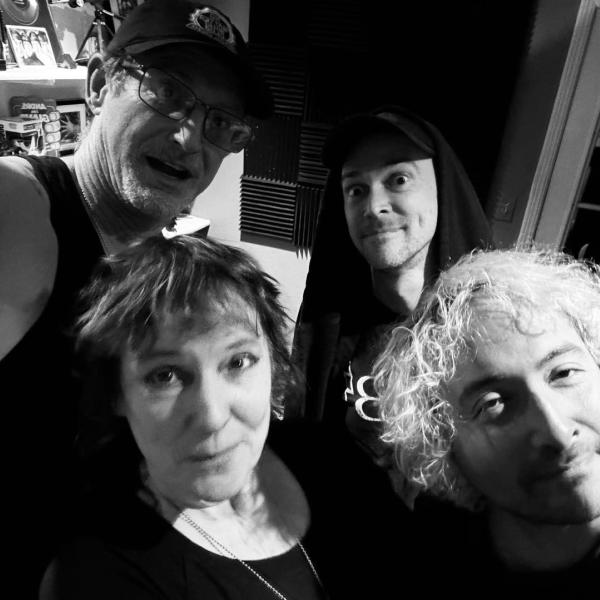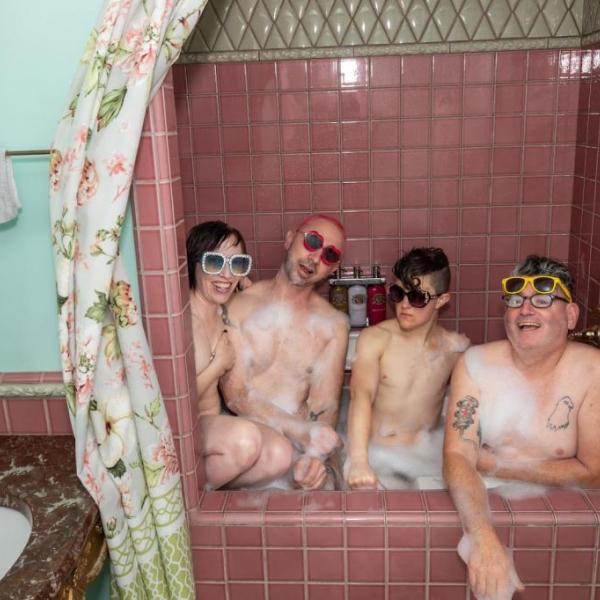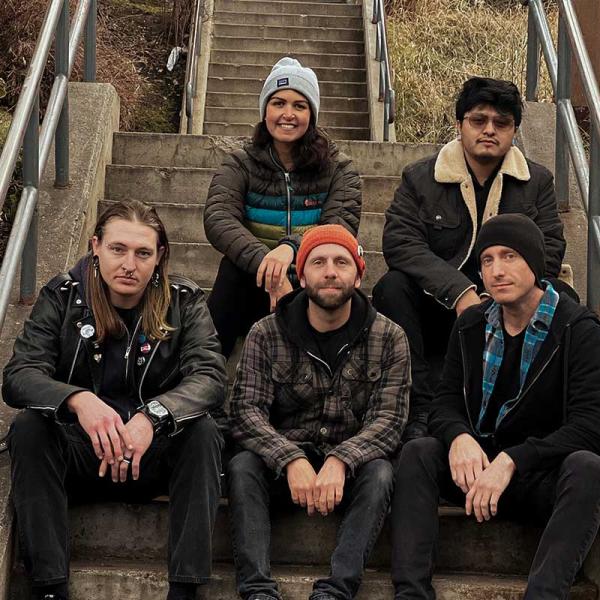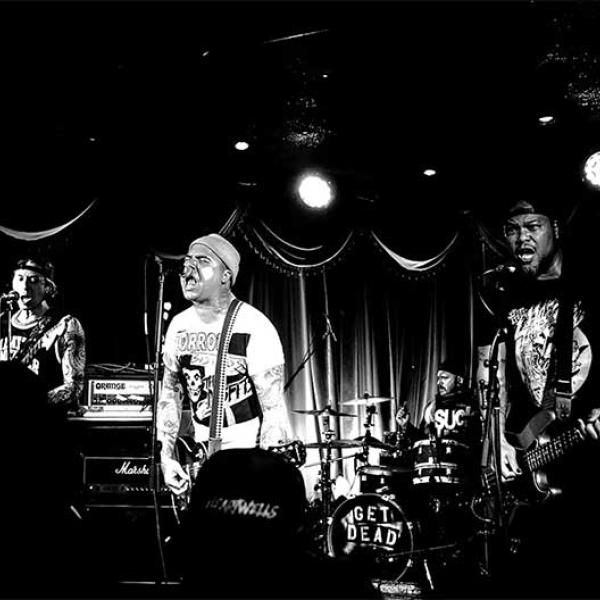Features
![Kali Masi's Sam Porter talks new album '[laughs]'](https://www.punkrocktheory.com/sites/default/files/styles/image_style_huge_horizontal_rectangle/public/kali-masi-feature-punk-rock-theory.jpg?itok=A13cNh7v&c=81eef1c69c645c08827acc578fca738d)
On their new record '[laughs]', Chicago-based indie punks Kali Masi burn through a collection of ambitious songs that center around the universal truth that 'the power and courage to be who we are is and always has been inside of ourselves — rather than in the arms and minds of those around us'. Recorded once again with Defeater's Jay Maas, the band crafted another masterful balance of urgency, tension and alluring instrumental harmony that will make you long for live shows even more. We caught up with singer and guitarist Sam Porter to talk about all things '[laughs]'. (photo credit: Michelle Johnson)
PRT: ‘[laughs]’ is your first new music in three years. When ‘Wind Instrument’ came out in 2017, you said you had worked on it for close to three years. Are you perfectionists when it comes to writing? Or does stuff just keep happening in between that slows things down?
Sam: We’re never going to put anything out that doesn’t represent us best, or that we don’t love or wouldn’t want to listen to. There isn’t any filler. The time it takes is the time it takes. There's unrealistic expectations set for artists to be completing masterful works of art in really short time frames (i.e. album cycles), to be constantly putting new things on social media, constantly releasing records and songs and progressing etc. etc. That’s not conducive to a healthy creative process, finding inspiration, or a healthy lifestyle. It’s sort of absurd to expect four Americans who have to support themselves independently of music to be pumping out art like that and to expect it to have emotional value. If we were putting out a record every single year just so we could tour on it and turn a coin– at that point it’s not art, it’s commerce.
PRT: A lot of the songs on ‘Wind Instrument’ dealt with change while the new album seems to be centered around deliverance. Are you already aware of something like a central theme while you are writing the songs? Or does that only happen when you take a step back at the end?
Sam: I’m too scatter-brained to write a concept record, someday I’d love to take a crack at it. Tying everything together usually happens towards the end. Honestly, going into both records we’ve always been a little self-conscious of the songs being too ‘all over the place’ but when we get everything tracked and listen back it’s easier to set yourself aside and see what they have in common emotionally and thematically and where we could add some things to tie at all together. It helps that all of the songs have the same narrator! The lyrics chronicle a period of time since the first record, and that’s been a pretty reflective time for me. I wanted to ‘show my work’ in the lyrics. The instrumentation for [laughs] was pretty collaborative, with me writing the skeletons of the songs and everyone else really injecting their personalities into them.
PRT: Speaking of a theme... you had a song called ‘Recurring (II)’ on ‘Wind Instrument’ and you now have ’Recurring (I)’ on the new album. Was that something you had already planned?
Sam: Yes, it was already planned and I have the demos to prove it! (I) and (II) were both going to be on Wind Instrument, but I didn’t finish the lyrics for (I) in time for WI. We’ve been jamming that song for like 6 years now and have been making little changes here and there. I figured it all out literally the night before we finished tracking the new record and tracked them on our last day in the studio. My voice was shredded at that point, so it was really an all-or-nothing moment physically. I’m glad it worked out that way, I think the time between both tracks and the amount of growth between them is really cool to listen back to. We took a lot of chances on (I) that made us a little freaked out to release it, which is always a good sign. Obviously the idea is you can play them back to back seamlessly, the lyrics of (I) end where (II) picks up, they share some themes (working through the haunts of recurring shame and grief) but aren’t pointing at the same situations. I’m really proud of what we did with those.
PRT: You recorded ‘[laughs]’ once again with Jay Maas. What was it about your previous collaboration that made him the best choice again?
Sam: Friendship and Trust.
PRT: Are there things you learned from recording ‘Wind Instrument’ that you went about differently this time around?
Sam: Just trusting yourself and pushing yourself a little harder. It’s easy to get fatigued when you’re working on something and say ‘okay, that's good enough’ and stop pushing. It's not a good way to make accurate art, because once you put it out into the world, it’s there forever and will actually outlive you! So trying to get it accurate to how you hear it in your head is really important, even if it’s something left of center. Of course, there will always be things you wish you had done differently, as were always changing. We pushed ourselves really hard on [laughs]. We wanted it to feel more raw and organic than the first record too. That was something that we all (the band and Jay) talked about and agreed on.
PRT: I really like how your music cannot be pigeonholed. You are punkrock, Midwestern emo, 90s alternative rock, hardcore... are you all listening to different things and is Kali Masi the sum of your collective influences?
Sam: Yes. I don’t think there’s a single band that all four of us completely agree on. We all have really different tastes. If we were a dish we’d be like, a chilli or gumbo or a stew or something!
PRT: You already molded those different sounds into a cohesive whole on ‘Wind Instrument’ but ‘[laughs]’ sounds even bolder, more adventurous and more confident. Is it fair to say that ‘[laughs]’ is you pushing the envelope on the framework that you established with ‘Wind Instrument’?
Sam: Yeah it is. There was all of this stuff we wanted to accomplish, like working in weird samples and sampled drums. Our goal isn’t genre-less but our tastes really are. We’re all really critical of the songs and making them as interesting and exciting as they can be. That’s another reason why it was really huge to work with Jay again, we had a mutual appreciation and trust that we both knew the thing we wanted to do would ‘work’. But there has never been a point where we sit in a circle and go ‘What kind of song would #KaliMasiBand write next?’
I know I keep saying the word ‘art’ a lot and maybe that word can become a little empty to toss around. But if you’re ‘making art’ why would you bother making something that isn’t totally reflective of you, and all of the weird you-ness with the parts that don’t fit anywhere else? That’s like, the whole point of it. Not that we’re Bjork or anything. But, make it honest and accurate to who and how you are.
PRT: Another thing I really like about your songs is how they are catchy without being too in-your-face about it and as a whole, ‘[laughs]’ is once again an album that slowly reveals itself over several listens. What is the secret to your songwriting?
Sam: ‘Fuck Around and Find Out’ is my mentality for songs. It’s important to explore the sounds in your head and find if and where they fit. Of course there’s a little bit of viewing it through a pop lens, but that’s never where we start. The catchiest parts usually happen really organically. Anthony is really good at finding little motifs and working them into his bass parts and rearranging things when something is not working.
PRT: You just released an animated video for the album’s second single, ‘Trophy Deer’, which you made yourself entirely. Did you do it yourself because it’s fun to do or because you want to keep things DIY as much as possible?
Sam: DIY is cool and a crucial building block of where we are from, but we aren’t married to the ethics of it as a means to an end. It’s a great toolset to have in your back pocket because, no matter how popular your band gets, unless you’re like, Johnny Marr or something, there is a lot of shit you’ll always have to do by yourself. especially when you’re the one with the vision. DIY often ends up DI(all by)Y. I think that there’s a little bit of ‘chip-on your shoulder-ism’ going on at times to see if we CAN do it ourselves, but it feels good when you achieve something without help from an authority on the subject haha.
Our bassist Anthony Elliott made the animation for the video by hand. We filmed most of it on a GoPro in our practice space and he rotoscoped the entire thing. Our drummer, John Garrison, made all of the illustrated backgrounds in the video and our friend Haley Riley did the patterns throughout it. It took them 2+ months to animate this video. It was Anthony’s first time animating, all self-taught and I don’t think I saw him a single time during that period where he wasn’t working on it.
PRT: Back in May, you also released ‘Square Pegs,’ a collection of demos, voice memos, songs, covers, basement and bedroom recordings and other sounds involving the band recorded between 2012 and 2019. Was that an idea that spurred from sitting around the house with nothing to do?
Sam: There was a bit of supply and demand going on, the supply being scraps of songs and ideas that we had laying around that we thought were cool and the demand being paying off recording time for the record and some other things. I love when a band lets you put your ear to the door of their world, or hear a rough draft of a song you love. We wanted to put together a collection of some stuff that maybe felt a little more intimate that may never get fully produced into anything.
PRT: Was it easy to go through all those recordings and make a selection? Or did it take more time than you thought it would?
Sam: There’s a TON of that shit. Demos from our first EP, a zillion iphone recordings of acapella drum beats and humming guitar line ideas, drafts and drafts and drafts of the evolution of a single song. So, yeah, it took a while to pick the parts that we thought were interesting. For instance, the first track where I’m walking to the bus and I had an idea for what became the end of Some Friends, or the wind chime at my moms house that’s on Wind Instrument. Little nods to things here and there to the songwriting process and alt versions of WI and [laughs] songs on there. Plus songs I didn’t remember writing!
PRT: ‘Square Pegs’ also features three covers. Between Against Me!’ (‘Problems’), Big Thief’s Adrianne Lenker (‘Blue and Red Horses’) and CSNY’s ‘Ohio’, it’s the latter that seems like the least obvious choice. Why did you decide to cover that particular song?
Sam: We used to cover that song at shows all the time. John and I are big Neil Young fans (John has seen him a bunch and has a huge NY tattoo on his arm. We actually recorded that cover with Mike Crotty when we were demoing the songs for Wind Instrument. Mike has recorded a ton of awesome records (a bunch of Ratboys records plus he plays guitar in Dowsing) and we lived together at the time. It’s an incredible song and is unfortunately increasingly relevant as we trudge through the second decade of the millennium.
PRT: A couple of years ago you changed the name of the band to Kali Masi because there are a lot of bands out there called Howl. Percentage-wise, how much of the choice for the new name would you say had to do with the name saying something about the music? And how much with there being pretty much zero chance of there being another band with the same name?
Sam: It was fine at first, but as time went on there were just more and more bands with the same name and we knew that we wanted to do bigger things so we had to set ourselves apart. It honestly really sucked for many reasons to do that so many years into being a band but we had to do it. We like the name because we love the animal Kali Masi and think it visually represents our sonic intention. That being said, band names are kind of silly and inconsequential. We’d change it again if we needed to. One of my favorite bands is named ‘TV on the Radio’ I don’t even think about how dumb that name is or what it could mean, I just love the band and their songs.
PRT: It wasn’t until two years after the release of ‘Wind Instrument’ in the US that the album was released in Europe via Gunner Records. How come?
Sam: We were a really small band (still are) and folks were still just finding out about us. It took a long time after the name change and the record to come out for people to dig into it. It’s like we were a brand new band. It just took a while to make those logistical connections and make it over to Europe for a European pressing to become an option.
PRT: There are probably a hundred things or more that you like about being in a band. But what is the one thing that makes it truly worth it?
Sam: Connecting with new people. It’s harder and harder to do that as you get older. It rules to all get into one room and feel the energy of being understood and related to.


